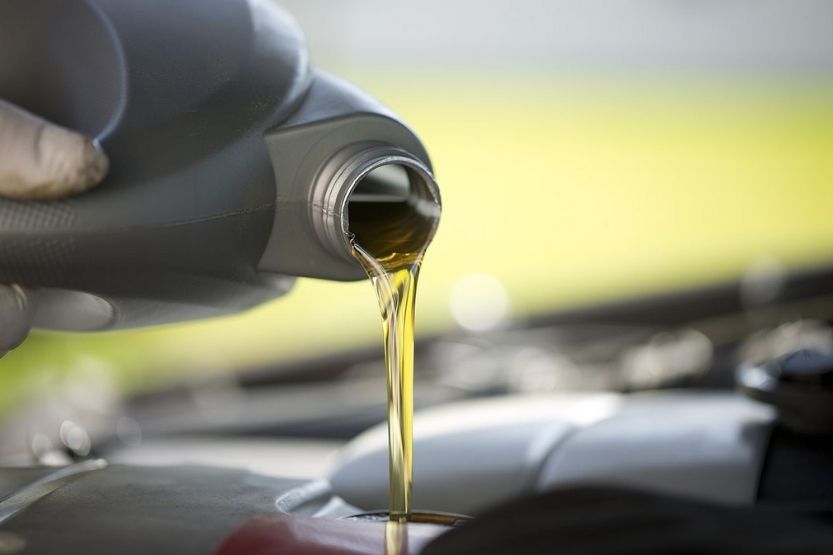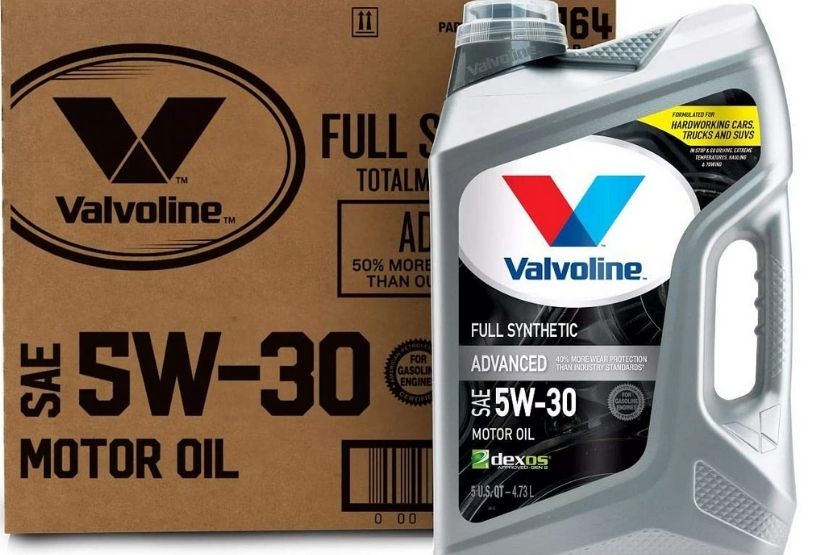5w30 and 5w20 are two of the most popular oils for cars and trucks. Some may use these oils interchangeably. Is this safe? Can you use 5w30 instead of 5w20 in your car?
You can use 5w30 motor oil instead of 5w20. 5w30 motor oil is more viscous than 5w20. If the oil is more viscous, it will provide more protection against friction because it is more resistant to heat and does not easily break down. As such, 5w30 oil offers better engine oil protection than 5w20 oil.
However, if your car engine needs 5w20 oil and you use 5w30 instead, you may experience a change in the engine’s efficiency. Under cold conditions, both grades of motor oil exhibit the same viscosity. But the viscosity of 5w30 is slightly higher at 100 °C. This means at normal operating temperature, 5w30 will be thicker than 5w20.
Read on to learn more about motor oils 5w30 and 5w20, if you could interchange them, their differences, and other things you should know about them.
Also, take a look at our recommended 5w30 oil, Valvoline Advanced Full Synthetic SAE 5W-30 Motor Oil, on Amazon, to see its price and great reviews:
Click here to see it on Amazon.
For an excellent 5W-20 oil, take a look at the Valvoline Advanced Full Synthetic SAE 5W-20 Motor Oil:
Click here to see it on Amazon.
Can I Use 5w30 Instead of 5w20?

You can use 5w30 instead of 5w20 if you need to. However, it is always best to use the grade of motor oil according to the engine manufacturer. If there is no other engine oil but 5w30, and your car engine needs an oil change, you can certainly use 5w30.
All things considered, 5w30 is more viscous than 5w20. As such, it provides better engine protection than 5w20. 5w30 engine oil becomes slightly more viscous at 100 °C than 5w20 oil. Therefore, once the engine reaches its normal operating temperature, 5w30 is thicker than 5w20.
5w30 oil is for warmer climates, while 5w20 oil is for colder temperatures. But for the most part, both motor oils can work just fine no matter the climate conditions.
Can you use 5w30 instead of 5w20? While you can use 5w30 instead of 5w20, it will affect the engine’s efficiency. If your engine needs 5w20, but you switched to 5w30 instead, it will affect the vehicle’s ride quality. The change in motor oil grade will lower the efficiency of the engine.
So unless you have no other option, you should not interchange 5w30 with 5w20. In other words, you can do this only if you need to. Also, I don’t recommend that you go against the car manufacturer’s recommendation, even if it appears safe. Automotive experts recommend against this kind of interchange.
What’s the Difference Between 5w30 and 5w20?
Viscosity
The primary difference between 5w30 and 5w20 motor oils is their viscosity. At normal temperature, 5w20 oil is thinner than 5w30 oil. Once you poured 5w20 oil into the car engine, it will create less friction because it is less viscous.
Suitable in Different Climate
If you use 5w20, there will be less drag in the pistons, crankshaft, and valve train. The fuel economy of the car will improve. With its thinner nature, 5w20 oil will enable the oil pump to circulate it from the oil pan all the way through all the engine parts easily. Thus, this oil is best for car owners residing in colder climates.
Meanwhile, the best motor oil for hotter climates is 5w30. Under high temperatures, thinner oils like 5w20 tend to break down easily. The thicker or more viscous motor oils can better resist heat and don’t easily break down.
Therefore in hotter climates, 5w30 will perform better than 5w20. It will provide more protection to car engines. This motor oil is famous mainly because of the following:
First, you can use it in many types of vehicles and engines.
While it is best for hotter climates, you can also use it in a wide range of temperatures.
Although 5w30 is different than 5w20, they are available in the automotive market because of their versatility. Most car manufacturers prefer these motor oil grades because you can use them in different engines across a broad range of temperatures. Therefore, whether you live in a cold or hot climate, these motor oils will give your car engine the best protection.
The Meaning of the Numbers

There are meanings to the numbers affixed to the names of these motor oils. In the chemical industry, liquids are given their respective viscosity values by their observed properties. The numbers 0, 5, 10, 15, 25, and so forth are post-assigned with the letter ‘W.’
W Stands for Winter
This letter stands for ‘winter’ and not ‘weight’ which others have assumed it to be. The engine oil’s viscosity measurement varies when placed under different temperatures, such as the weather.
Kinematic Viscosity
This is where the kinematic viscosity of a liquid comes into play. A fluid’s internal resistance to flow under gravitational forces is its kinematic viscosity. The numbers are given based on the oil’s ability to travel through a standard orifice at regular or standard temperatures.
If the liquid takes longer to flow through the orifice, it will give a higher SAE numerical code because of its higher viscosity. Thus the 30 in 5w30 means it has a higher viscosity than the 20 in 5w20. SAE stands for Society of Automotive Engineers, global standards developing organization for engineering professionals.
Viscosity
Viscosity is the measurement of the flow of liquid. If the liquid is given a low viscosity, it means it can flow easily. Another word used to describe this kind of liquid is ‘thin.’ So water is thin because it flows easily in most conditions.
In contrast, molasses is given a high viscosity rating because it cannot flow easily as water does. People usually refer to the liquid consistency of molasses as ‘thick.’ In between the liquid consistencies of water and molasses lies motor oil.
Motor oil is not as thick as molasses or as thin as water. There are also various grades of motor oil. This is the meaning of the numbers you usually see indicated in the canisters of motor oil you buy from the gasoline station.
What about the other numbers and letters? Let us take the example of 5w30. The first number, ‘5’, stands for the classification or type of oil, while the ‘W‘ stands for ‘winter.’ In other words, the name informs you that you can use this oil in cold climates.
So, when the car manufacturer recommends a particular motor oil grade for your engine, follow their advice. Use the motor oil that they recommend. Although you can use either 5w30 or 5w20 for your engine, the best motor is the one that the car maker recommends.
If you don’t follow their advice, your car won’t provide you with good fuel economy. The drivability of your car will also be affected. To ensure the best performance and fuel economy, use the right motor oil.
Frequently Asked Questions
What Can Happen If You Use 5w30 in a 5w20 Car?
Of course, you can put 5w30 in your 5w20 car and vice versa if you have no other option left. In general, car manufacturers frown upon this practice. They know what their car engine needs to be able to operate efficiently and with lesser problems.
Both 5w30 and 5w20 motor oils share the same winter rating. That means both these oils can provide the same viscosity under cold weather. However, 5w30 exhibits a slightly higher viscosity than 5w20 at 100 °C.
That means, when the engine reaches its normal operating temperature, 5w30 will get thicker than 5w20. 5w30 oil will encounter increased resistance. It will result in a slight reduction in your car’s fuel economy as well as its output in horsepower.
There is also a danger of damaging the car engine by using 5w30 instead of 5w20. If you put 5w30 oil in an engine that requires 5w20 oil, you run the risk of damaging the engine parts. These engine components are designed to work only with 5w20 motor oil.
What If I Use 5w20 on a 5w30 Car?

This is not a good idea either. 5w20 oil will be too thin for your engine. It cannot provide the protection required by your engine. In general, 5w20 motor oils have higher additives. Also, these oils shear very little under normal operating conditions.
If all you can do at the moment is mix 5w20 with 5w30, you can go ahead. There is minimal viscosity difference between 5w30 and 5w20. But mixing weights should only be done when there is no other option left. While the viscosity difference between these two oils is minimal, there is still a difference.
You can mix 5w30 synthetic oil with 5w20 synthetic oil. It is preferable if they are from the same manufacturer and have the same API (American Petroleum Institute) service level with almost the same formulation. But you can do this because different brands are mostly compatible with each other.
Which Motor Oil Should You Use?
You need to consider certain factors when choosing the motor oil you should use for your car engine. While these two motor oils are not really very different from each other as far as their ability to protect a car engine, you should also consider the slight difference in their viscosities.
If you do most of your driving in a hot climate, it is better that you use 5w30 instead of 5w20. This motor oil performs well under high temperatures. It will provide engine protection over 5w20 oil.
But if you are mostly driving in cold climates, you should use thinner or less viscous motor oil in your engine. Therefore your better option is 5w20 motor oil. The oil will flow much easier and lubricate the engine parts even during cold winter.
If you drive a lot in places where there are no extreme temperatures, you can use either 5w20 or 5w30 in your engine. Both these oils can perform well under normal weather conditions.
Motor Oils You Can Use for Your Engine
Two types of motor oils can provide your car engine the best protection it needs, whether you live in a cold or a hot climate.
One such motor oil is the Valvoline Advanced Full Synthetic SAE 5W-30 Motor Oil:
Click here to see it on Amazon.
This motor oil contains innovative anti-wear additives that will provide 50% more protection than industry standards. The Industry Sequence IVA wear test proves this.
The Valvoline Advanced Full Synthetic SAE 5W-30 Motor Oil is a full synthetic formula for superior protection for low and high-temperature conditions. It also contains extra detergents that will prevent sludge and deposits from forming inside the engine.
The other motor oil is the Valvoline Advanced Full Synthetic SAE 5W-20 Motor Oil:
Click here to see it on Amazon.
This oil contains anti-wear additives that provide 50% more protection than industry standards.
This Valvoline 5W-20 motor oil also contains superior antioxidants to prevent its breakdown in extreme weather conditions. It is a full synthetic formula that can protect your car engine in extreme temperature conditions.
Conclusion: Can I Use 5w20 Instead of 5w30?
There is no harm in using 5w20 motor oil instead of 5w30, but it is not advised. You should always use the recommended motor oil grade for your car engine. Do this only if your car needs to have an oil change and you don’t have the right kind of oil.
5w30 motor oil is more viscous than 5w20 oil. If all things are considered, the more viscous engine oil will protect against friction because it is more resistant to heat and will not easily break down.
As such, 5w30 oil offers better engine oil protection than 5w20 if that is what your car engine needs. But if your car needs 5w20 and you use 5w30, you may experience a change in the engine’s efficiency.
Related reading:
10w30 vs 5w30 [What Is the Difference Between 5w30 and 10w30 Oil?]
Shell Rotella Gas Truck Motor Oil Review
Mixing Oil Weights [Can You Mix Oils of Different Viscosity and Weight?]








![Pennzoil Ultra Platinum 5w30 Oil [Full Review] pennzoil ultra platinum 5w30 oil](https://roadsumo.com/wp-content/uploads/2022/02/Pennzoil-ultra-platinum-5w30-oil-150x150.jpg)

![Read more about the article MS-6395 Oil List [What are They and Their Benefits]](https://roadsumo.com/wp-content/uploads/2021/12/MS-6395-oil-list-300x200.jpg)
![Read more about the article Toyota Power Steering Fluid [Best Picks and What to Know]](https://roadsumo.com/wp-content/uploads/2022/02/Toyota-power-steering-fluid-300x200.jpg)
![Read more about the article Mixing Oil Weights [Can You Mix Oils of Different Viscosity and Weight?]](https://roadsumo.com/wp-content/uploads/2021/05/mixing-oil-weights-300x200.jpeg)